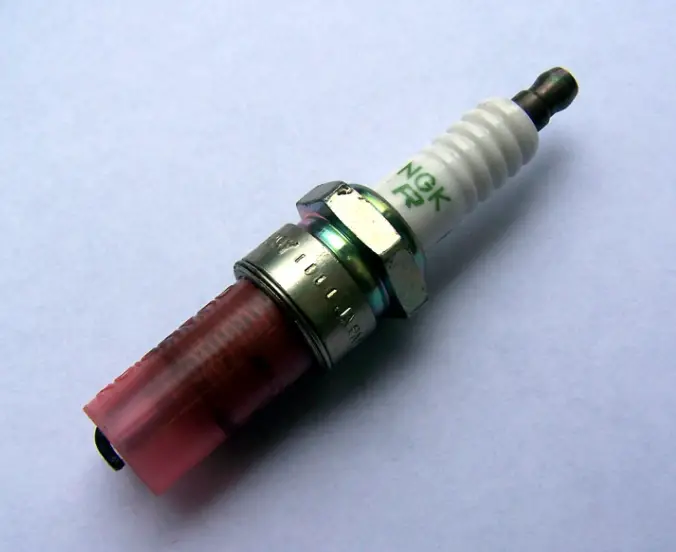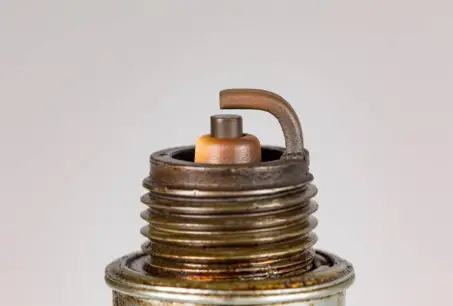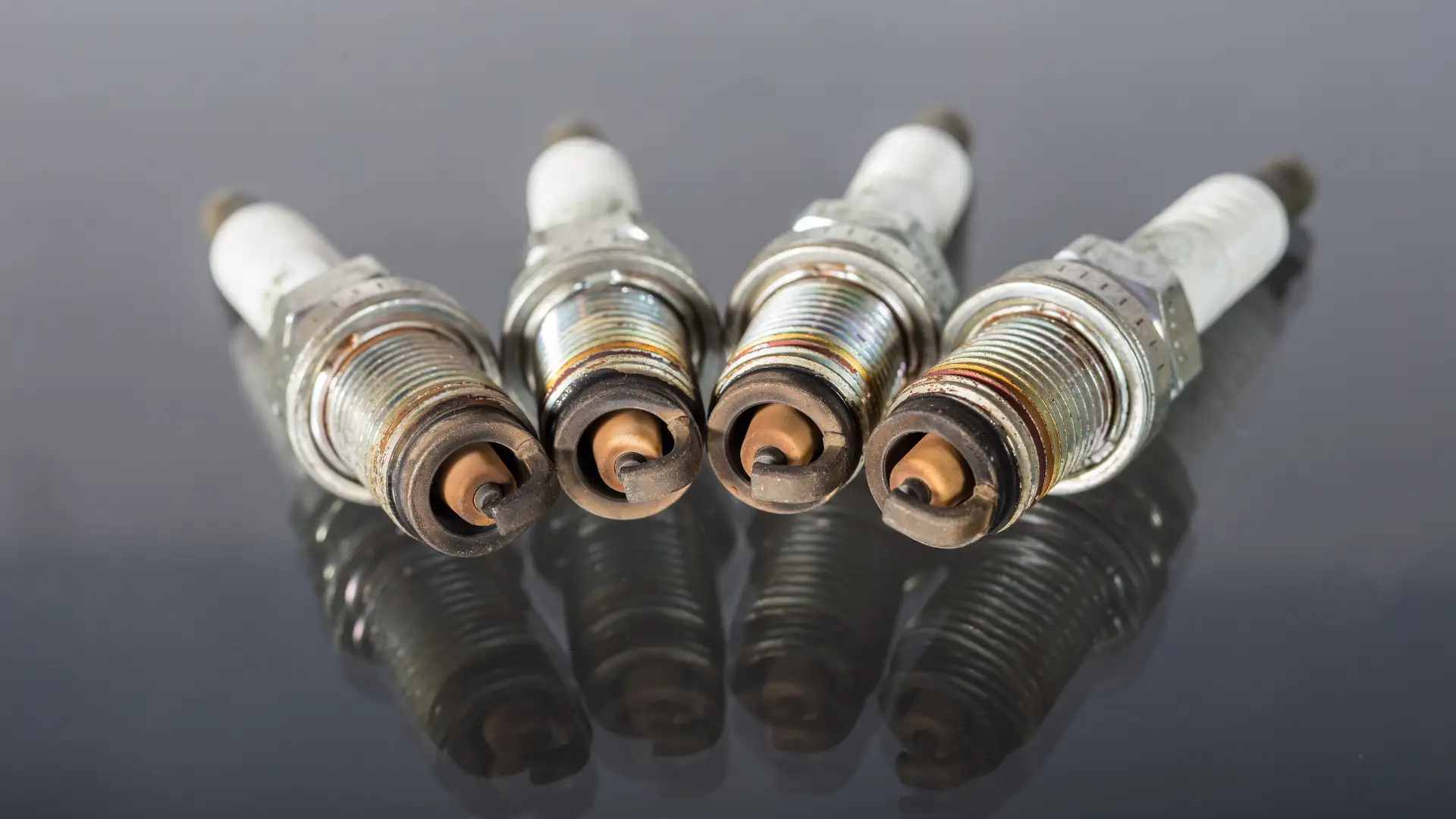If you’ve been reading my posts lately, then you might already be familiar with this topic. We’ve already established that lawn mower spark plugs and a car spark plug aren’t interchangeable, and whilst I’ve touched on lawn mower spark plugs in that article, I feel it’s best to talk about it separately.
So, we know that an automobile spark plug and lawn mower spark plug aren’t the same, but are lawn mower spark plugs universal?
WELL, ARE THEY?
No, lawn mower spark plugs aren’t universal, and that’s because different lawn mower engines need different spark plugs to do their job. Although they all do the same thing within the engine, spark plugs in different lawnmower engines will need to be different sizes, deal with a different heat range, and might even fit differently in the internal combustion engine.
But there’s far more to today’s topic than just that, so stick around if you want to learn more about lawn mower spark plugs so you can make sure you get the right spark plug replacement if your old spark plug is past its use.
The Role Of Your Lawn Mower Spark Plug
Many automobile plugs and lawnmower spark plugs do the exact same job in combustible engines.
The spark plug creates an electric spark when a high voltage is applied to the centre electrode by the ignition coil (when the ignition system is activated, e.g. you turn the key or pull on the starter rope), which then creates a high potential difference between the centre electrode and the ground electrode. The spark then sets fire to the air fuel mixture in the combustion chamber as it jumps the gap between the two electrodes.
The engine then starts running, and the lawn mower blade can cut. As this continues, electric sparks will continue to jump from the centre electrode to the ground or outer electrode, continually burning the air and fuel mixture.
This is the same in every lawn mower, regardless of the engine model or lawn mower model you have.
But just because they do the same job, doesn’t mean they all use the same spark plug.

Why Aren’t All Lawn Mower Spark Plugs The Same?
Say you take a bad spark plug off your current lawn mower and take a good one from the exact same manufacturer lawnmower model – then you’ll be able to interchange them without a problem. The issue you’ve got is that each lawnmower engine is different between manufacturers, so you can’t just take any old spark plug from any old engine to use as your replacement spark plug.
You need to find your specific spark plug for your specific engine model.
HOW DO I KNOW WHICH SPARK PLUG I REQUIRE?
Finding the right spark plug for your lawn mower engine should be pretty easy, so long as you have the owner’s manual to hand. Your owner’s manual will list everything about the correct spark plug for your engine.
If you don’t have the manual, read on below because I’ll discuss the major physical differences between lawn mower engines and their spark plug types so you can look out for some important details on your old spark plug before replacing it with the perfect match.
What Are The Major Differences Between Lawn Mower Spark Plugs?
Every small engine model will be put together slightly differently. It’s like car engines. Yes, they all have the same components, but they are all put together differently to meet certain requirements for that specific engine and, in this case, the specific spark plug.
Take any specific plug from any walk behind lawn mowers or ride-on mowers and you’ll notice a few differences:
Thread Width
The first thing you’ll notice is that each thread size is different, and the most obvious place you’ll notice this is on the thread width.
Lawn mowers generally have spark plugs with a width of around 10 to 12mm. All lawn mowers will be different on where they fit in that range depending on the size of their engine.
Of course, ride on lawn mowers will have larger engines, and walk behind mowers will have small engines, but even within these two broad categories there will be differences that mean the spark plug needs to be a fraction of a mm smaller or larger.
If you buy a spark plug replacement for your lawn mower, believing it to be the right spark plug, but find that it’s too wide or too narrow to install properly, don’t force it! Doing so can, at best, lead to poor engine performance, and at worst, ruin your lawn mower engine and void any warranties you have.
If you have the right spark plug, it will screw into place easily without resistance because the thread size will be correct.
Thread Length
Many lawn mower engines and automobile engines use a tapered hole for the spark plug to fit into the cylinder head. That tapered hole will have different lengths, depending on the automobile gasoline engines or lawnmower engine size.
That means that the thread length of the spark plug will vary between each lawn mower, too. Although lawn mowers generally have spark plugs with a thread length that’s around 3/8 of an inch, this isn’t an exact science.
Again, with each manufacturer of small engines, they’ll create a lawnmower engine that needs a spark plug with a slightly smaller or longer thread length.
If you have a spark plug with the right thread length, then it will fit perfectly in the engine, but if you have one with the wrong thread length you’ll notice that it’s too short or too tall right away.
Just like with the width, if the length is off, you shouldn’t try to force the spark plug into the engine anyway, because even if it manages to get the engine working, you’ll notice poor running characteristics and even worse fuel efficiency. That’s how important getting the right spark plug for your specific lawn mower is.
Thread Pitch
The thread pitch is something else that differs about spark plugs between each engine for lawn mowers (and it’s true of auto engines and auto plugs too).
The pitch refers to the angle that the thread needs to be at in order for the spark plug to be installed correctly. And, yet again, all lawn mower manufacturers create their engines slightly differently so the pitch is slightly different too.
If you buy a spark plug that doesn’t fit the pitch, then you just won’t be able to install it, and your lawn mower won’t be able to run.
Gap Between Electrodes
Perhaps the most important difference between lawn mower spark plugs is the spark plug gap. The correct gap between the two electrodes is essential in order for the electric sparks to jump across it and ignite the fuel so the engine can first start, and then continue to run.
Back in the day, before lawn mowers became a competitive market for manufacturers, this spark plug gap will have been pretty standardised. But now each manufacturer has a different idea of what the proper gap between the electrodes ought to be in order to get the best performance out of their specific engine.
If you use a spark plug with a different ideal gap to the one your lawnmower is supposed to use, then you can run into all sorts of problems:
- not starting
- taking too long to start
- engine cutting out
- misfires
- overuse of fuel
- wearing out your spark plug much sooner than you should
- and potentially breaking your engine
So always make sure you use a spark plug with the right gap for your engine.

Heat Range
And finally, one of the other major differences between lawn mower spark plugs is the heat range it can deal with.
Every spark plug in every engine in every lawnmower in the world is designed to operate at certain temperatures based on how that particular engine runs and the heat it has to deal with. If you use a spark plug that doesn’t have the right heat rating for your engine, then you’ll notice issues again.
If you use a too cold plug, then there’s a chance the engine can misfire and you can oil foul your spark plug (where oil leaks in and the spark plug’s usual smooth, round surface begins to be chipped away until it can’t be used any longer). And if you use a too hot plug, then the centre electrode can pre-ignite prematurely, and you’ll notice issues with the mower as it’s running.
Making Sure You Find The Perfect Replacement
So, now you know all about the differences between each spark plug for each lawn mower manufacturer, you’ll probably want to know how to identify the right replacement spark plug for your lawn mower.
In the first instance, you should either contact the manufacturer direct, speak with a professional in a hardware store, or look through your manual and paperwork that shipped with your mower to find the information you need.
If that fails, you’ll need to investigate your current spark plug a little more to try and find the perfect match to replace it.
Simply remove the spark plug using a spark plug wrench, and then clean away the excessive dirt from the plug using a spark plug cleaning brush. Engine dirt buildup is common, but it will get in the way of identifying the right thread size, length, width, and pitch, which you’ll need to identify so you get the right replacement.
If you can gather that information by measuring it, then all you’ll need is your lawnmower make and model information to find the perfect replacement online. Just look up the recommended spark plug for your lawn mower and compare it to the information you’ve found out about your old spark plug from your investigation. If they match, then Voila, you’ve found your replacement!
Final Thoughts
Now that you know spark plugs aren’t universal for lawn mowers, you can make sure you avoid the mistake of buying the wrong one, or worse, trying to force an ill-suited spark plug into your lawn mower’s engine.
Consult your manual and paperwork, make sure the replacement plug you’re about to buy matches your old one, and speak with someone if you’re unsure, and it should be easy to find the correct plug for your lawn mower’s engine!


